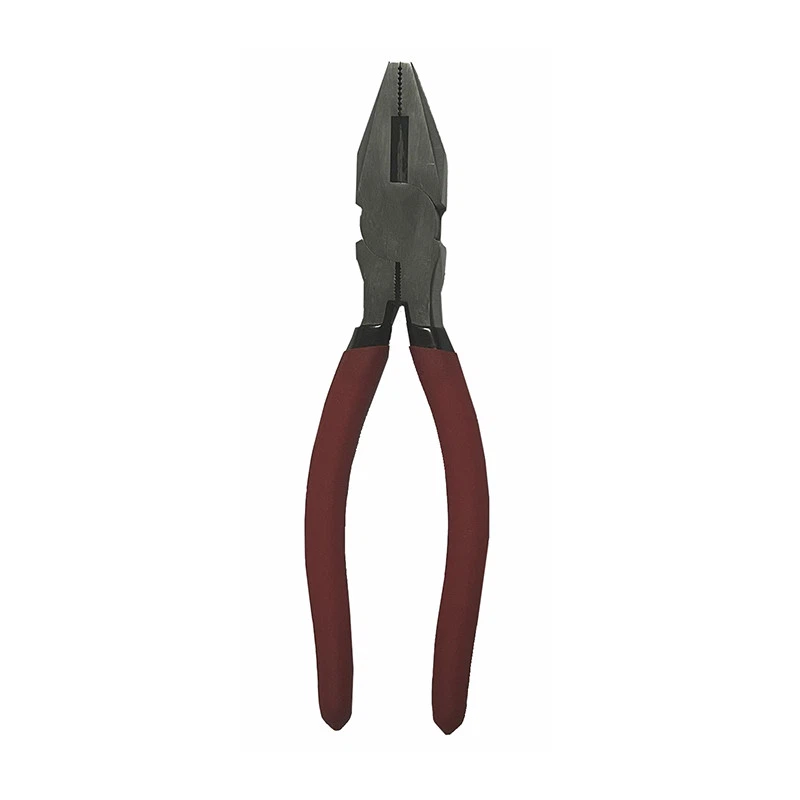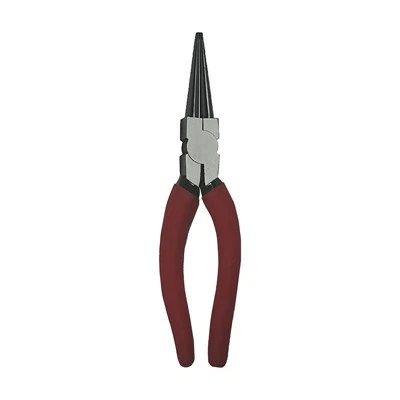Slip joint pliers are a versatile tool found in many toolboxes, known for their adjustable jaws that can grip objects of various sizes. Soldering, on the other hand, is a process of joining two or more metal items by melting and flowing a filler metal into the joint. Given the distinct nature of these two operations, the question arises: Can slip joint pliers be used for soldering? In this blog post, we'll explore this question in detail, considering the capabilities and limitations of slip joint pliers in the context of soldering, and also highlight our offerings as a slip joint pliers supplier.


Understanding Slip Joint Pliers
Slip joint pliers are designed with a pivot point that can be adjusted to change the distance between the jaws. This feature allows them to grip objects of different sizes, from small nuts and bolts to larger pipes. The jaws of slip joint pliers are typically serrated to provide a better grip on the workpiece. They are commonly used in plumbing, electrical work, and general household repairs for tasks such as gripping, bending, and cutting wires.
The Soldering Process
Soldering involves heating a filler metal, called solder, to its melting point and then flowing it into the joint between two metal surfaces. The solder then cools and solidifies, creating a strong bond. To perform soldering, you need a soldering iron or a soldering gun, solder, and flux. The soldering iron or gun is used to heat the joint and the solder, while the flux helps to clean the metal surfaces and promote the flow of the solder.
Can Slip Joint Pliers Be Used for Soldering?
The short answer is yes, slip joint pliers can be used in the soldering process, but with some limitations. Here are some ways slip joint pliers can be useful during soldering:
Holding Workpieces
One of the primary functions of slip joint pliers in soldering is to hold the workpieces in place. When soldering two or more metal parts together, it's essential to keep them steady to ensure a proper joint. Slip joint pliers can grip the workpieces firmly, preventing them from moving during the soldering process. This is particularly useful when soldering small or delicate components that are difficult to hold by hand.
Heat Dissipation
During soldering, the heat from the soldering iron can be transferred to the workpieces. If the workpieces are not properly held, the heat can cause them to warp or damage surrounding components. Slip joint pliers can act as a heat sink, absorbing and dissipating some of the heat from the workpieces. This helps to prevent overheating and ensures a more controlled soldering process.
Bending and Shaping Wires
In some soldering applications, you may need to bend or shape wires before soldering them. Slip joint pliers can be used for this purpose. The adjustable jaws of the pliers allow you to grip the wire firmly and bend it to the desired shape. This is especially useful in electrical work, where wires need to be bent to fit into connectors or circuit boards.
Limitations of Using Slip Joint Pliers for Soldering
While slip joint pliers can be useful in soldering, they also have some limitations:
Heat Resistance
Slip joint pliers are typically made of metal, which conducts heat well. However, they are not designed to withstand the high temperatures generated by a soldering iron or gun. Prolonged exposure to high heat can damage the pliers, causing the jaws to lose their shape or the serrations to wear off. Additionally, the heat can also cause the metal of the pliers to expand, which may affect their gripping ability.
Insulation
Soldering often involves working with electrical components, and it's important to ensure that the tools you use are properly insulated to prevent electrical shock. Slip joint pliers are not typically insulated, which means they can conduct electricity if they come into contact with live wires. This can be a safety hazard, especially when working on electrical circuits.
Precision
Soldering requires a high degree of precision, especially when working on small or delicate components. Slip joint pliers are relatively large and bulky tools, which can make it difficult to perform precise soldering tasks. The serrated jaws of the pliers can also leave marks on the workpieces, which may not be desirable in some applications.
Our Slip Joint Pliers Offerings
As a slip joint pliers supplier, we understand the importance of providing high-quality tools that meet the needs of our customers. Our slip joint pliers are made from high-grade materials and are designed to provide a strong grip and long-lasting performance. Here are some of the features of our slip joint pliers:
- Adjustable Jaws: Our slip joint pliers feature adjustable jaws that can be easily adjusted to grip objects of different sizes. This makes them versatile tools that can be used in a variety of applications.
- Serrated Jaws: The jaws of our slip joint pliers are serrated to provide a better grip on the workpieces. This helps to prevent slippage and ensures a more secure hold.
- Comfortable Grip: We understand that using tools for extended periods can be tiring, which is why our slip joint pliers are designed with comfortable grips. The grips are ergonomically shaped to reduce hand fatigue and provide a better user experience.
In addition to slip joint pliers, we also offer a range of other hand tools, including American Type Combination Pliers, Locking Grip Plier, and American Type Bent Nose Pliers. These tools are designed to meet the needs of professionals and DIY enthusiasts alike.
Conclusion
In conclusion, slip joint pliers can be used for soldering, but they have some limitations. They can be useful for holding workpieces, dissipating heat, and bending wires, but they are not designed to withstand high temperatures, are not insulated, and may not provide the precision required for some soldering tasks. As a slip joint pliers supplier, we offer high-quality tools that are designed to provide a strong grip and long-lasting performance. If you're looking for slip joint pliers or other hand tools for your soldering projects, we invite you to contact us to discuss your requirements and explore our product offerings. We're committed to providing our customers with the best tools and services, and we look forward to working with you.
References
- Black, J. T., & Kohser, R. A. (2008). DeGarmo's Materials and Processes in Manufacturing. John Wiley & Sons.
- Groover, M. P. (2010). Fundamentals of Modern Manufacturing: Materials, Processes, and Systems. John Wiley & Sons.
- Oberg, E., Jones, F. D., Horton, H. L., & Ryffel, H. H. (2000). Machinery's Handbook: A Reference Book for the Mechanical Engineer, Designer, Manufacturer, Draftsman, Toolmaker. Industrial Press.





